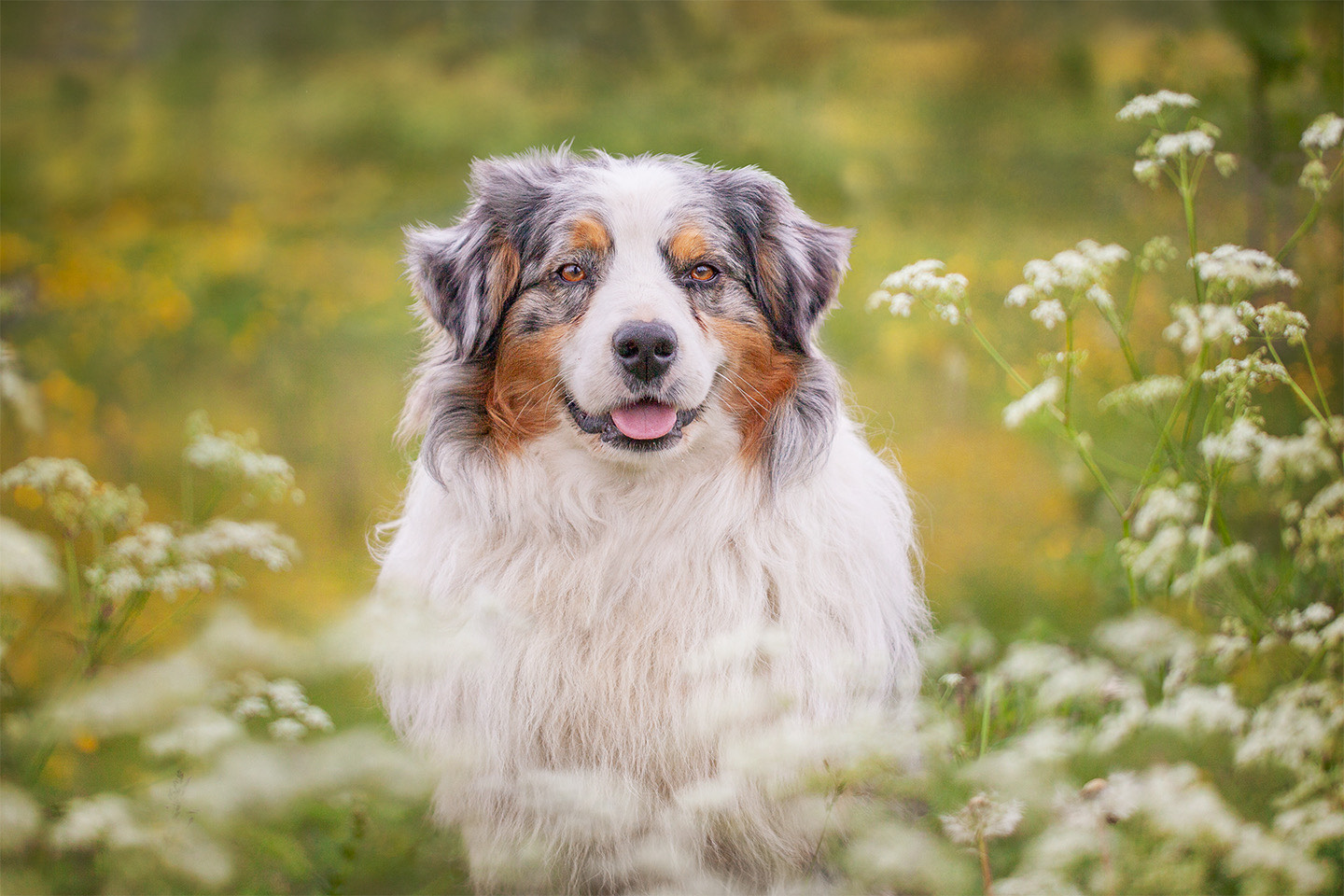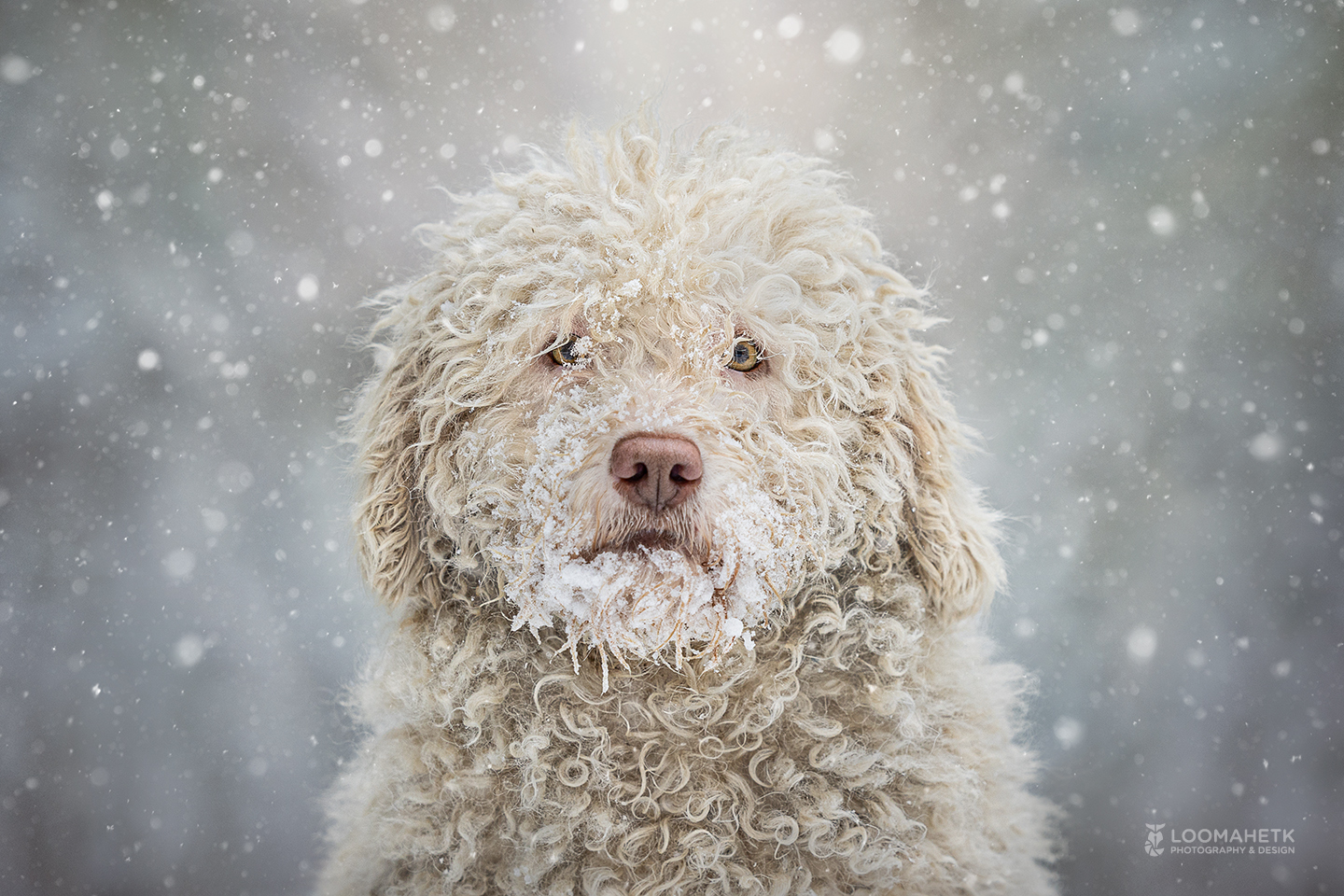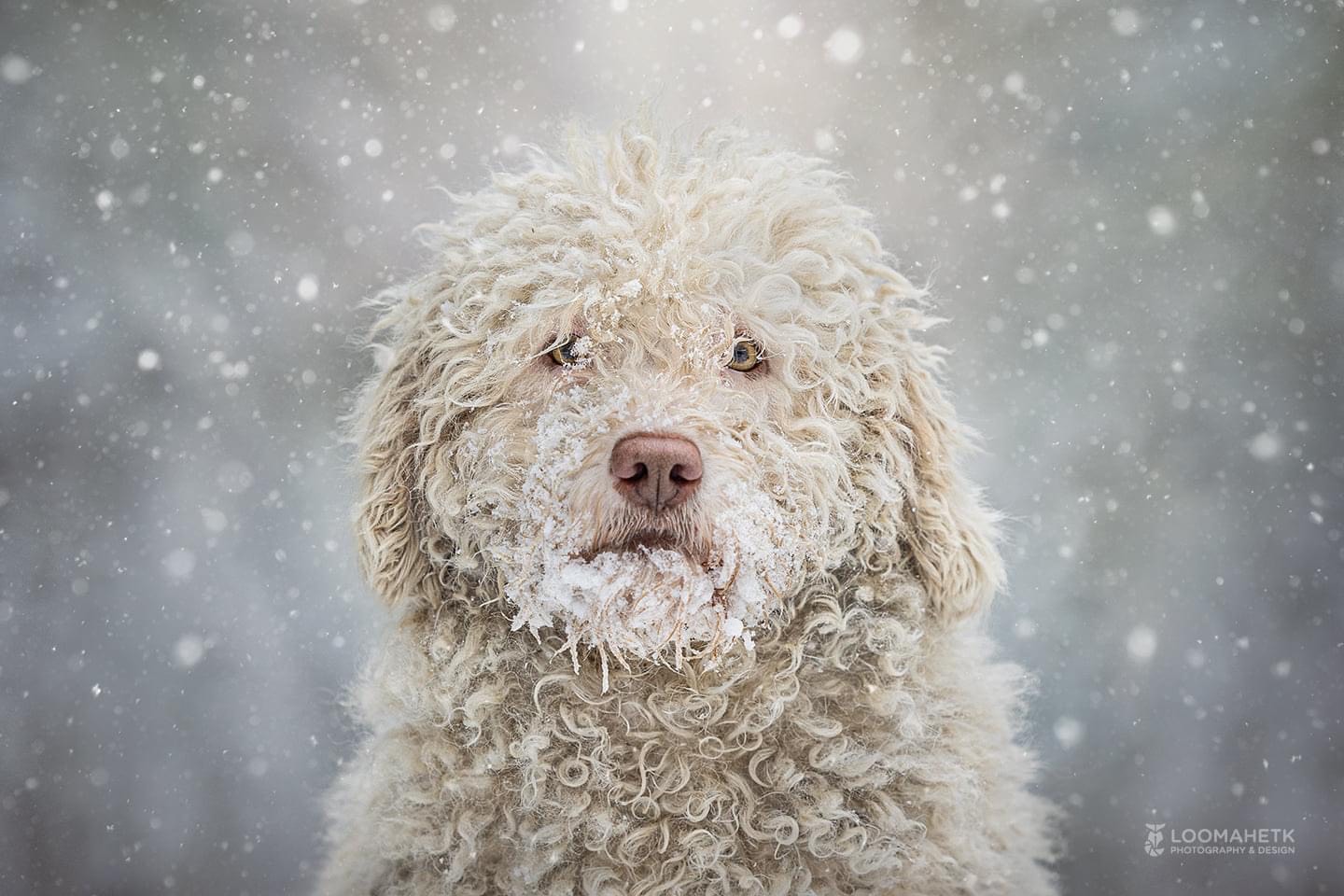A robust, medium-sized dog, the Spanish Water Dog has a curly, woolly coat that can be corded when long, or kept clipped short. They are strong and muscular and as their name suggests, love getting wet and are well suited to swimming and retrieving from water.
- Dogs suitable for experienced owners
- Extra training required
- Generally healthy breed
- Enjoys active walks
- Enjoys more than two hours of walking a day
- Can be left occasionally with training
- Medium dog
- Some drool
- Requires grooming every other day
- Quiet dog
- Welcomes everyone happily
- Could have issues with unknown dogs but gets along with known dogs
- Gets along with other pets with training
- Great family dog
- Needs a large garden
- Can live in semi-rural areas
- Origin
Personality
The Spanish Water Dog is bright, intelligent, friendly and even-tempered, and they love to work. With gainful employment via training, and a variety of dog sports or activities, the SWD is an excellent, active and fun companion dog. Although they may bond to one person in the family more than others, this is a gregarious dog who likes his family group to stay together, probably as a result of his herding ancestry!
History and Origins
Country of Origin: Spain
If the woolly coat of the Spanish Water Dog puts you in mind of the poodle, you can be forgiven for your error, as both Poodles and Spanish Water Dogs likely have a shared ancestor - the Barbet. Known to exist in Europe for several thousands of years, water dogs with woolly coats have served a variety of purposes, including hauling in fishing nets, retrieving items lost overboard, but also herding sheep and goats.
Today this rare breed is mostly seen in the show-ring but retains an all rounder attitude to a variety of jobs and is a bright, intelligent dog who can make a fun companion if their grooming needs are not an issue.
Health and Common Issues
As with many breeds, the Spanish Water Dog can suffer from various hereditary eye disorders, and hip dysplasia (a condition that can lead to mobility problems). Eye testing and hip scoring of dogs prior to breeding is therefore important.
Exercise Needs
At least an hour of dog exercise per day will be required – but this is a dog who needs plenty of mental exercise too. As a versatile dog with a history of retrieving, swimming, herding and even watch-dog work, the Spanish Water Dog will enjoy a variety of activities and excel in a home that enjoys training and working with their dog. Water remains the SWD’s favourite however, so be prepared for a wet dog with a coat that collects all manner of ‘additions’ along the way!
Space Requirements
As a medium sized and compact dog, the Spanish Water Dog does not need a large home, but one set up to cope with a wet dog who may spread water and mud would be ideal. Happier in the countryside than in a city, the Spanish Water Dog will need access to a variety of interesting rural walks and a secure garden at home, with space to practice training and games.
Nutrition and Feeding
The Spanish Water Dog needs to have a balanced diet including all the main nutrient groups and a constant supply of fresh water. It's also important to conduct regular body condition scores to ensure you keep your dog in ideal shape and remember to feed him at least twice daily and in accordance with the feeding guidelines of his particular food.
Grooming Spanish Water Dog
Grooming the Spanish Water Dog takes some understanding of dog grooming in general and how their coat works. They can of course be kept clipped off all over and if you don’t mind them looking like a fluffy ball, there is no reason why you cannot keep one brushed out, much as the breed aficionados may gasp in horror!
To keep the breed the way they were intended however, the coat is clipped off annually, never ever brushed, but instead teased into skinny cords. Special attention is paid to areas where matting will be heavier, such as behind ears, armpits, between legs, to ensure the cords there are fine and not pulling on the skin.
To dry after a bath or a swim, the dog is patted and the coat squeezed dry then left to air naturally, never ever rubbed.
Always check between paw pads for foreign bodies or mats that may rub or pull, and inside the ears.
Training Spanish Water Dog
The Spanish Water Dog will actively enjoy dog training as long as positive reinforcement is used and their natural desires taken into account. Not a dog to be left idle or bored and they’re easily capable of doing well in almost any recognised canine sport. They will suit an owner with a passion for training and dog activities.
Best Family Dog Breeds
For families with the time to train and work with their Spanish Water Dog, they are an excellent companion, however this is a dog who gets bored easily and so may be better with older children who can join in the training and activities.
While many dogs are traditionally thought of as being good with children, all dogs and children need to be taught to get on with each other and be safe together. Even so, dogs and young children should never be left alone together and adults should supervise all interactions between them.
Did You Know?
Although the Spanish Water Dog has existed as a type of working dog in rural Spain for some time, as breed they have only been internationally recognised very recently. Efforts to establish them as a pedigree breed began in the 1970s, and the Spanish Kennel Club accepted them in the mid-1980s.
There is also some confusion as to which breed group the Spanish Water Dog belongs in, with the UK Kennel Club classifying them as Gundogs, but the American Kennel Club placing them in the Herding group.







